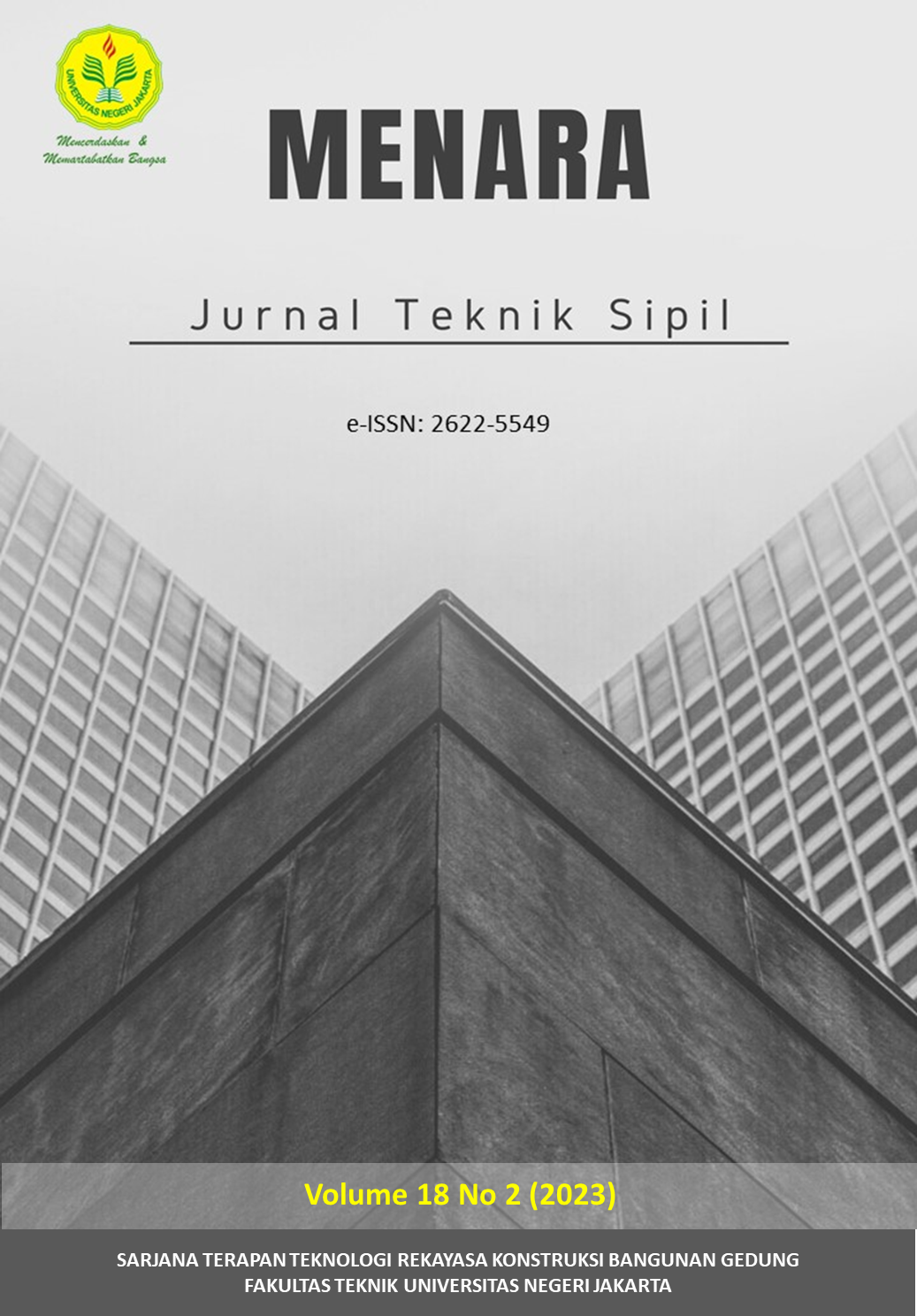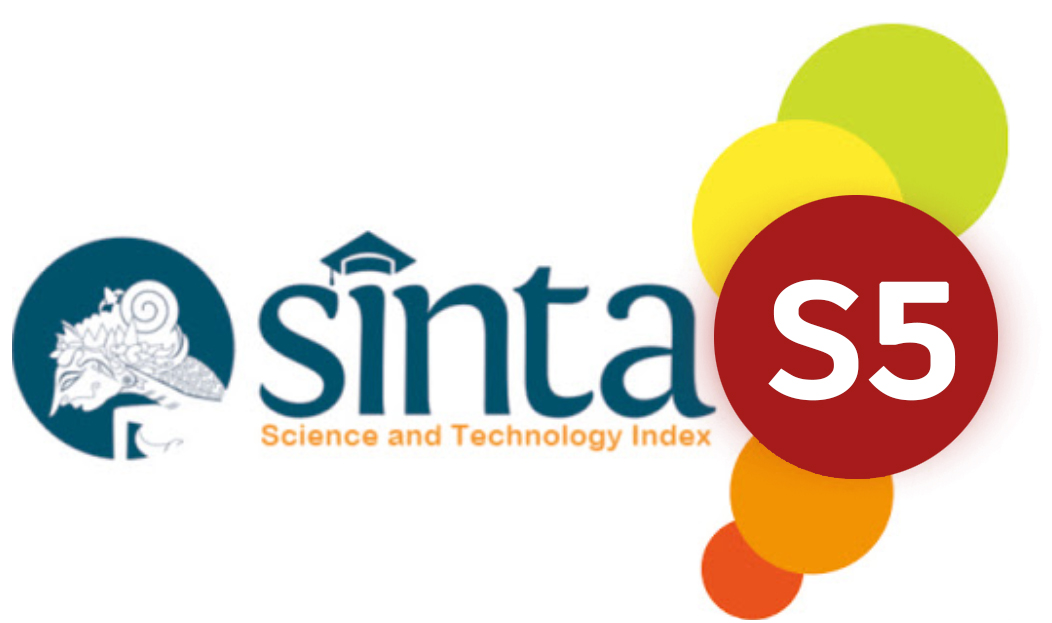ANALISIS CAMPURAN BAHAN ALAM KULIT POHON BERINGIN TERHADAP KUAT TEKAN BETON
DOI:
https://doi.org/10.21009/jmenara.v18i2.35249Keywords:
Beton, Kuat Tekan, Kulit Pohon BeringinAbstract
Abstract
Concrete is one of the main materials in a building or construction. In this study the results of a mixture of banyan tree bark on the concrete mixture produced the following compressive strength: a mixture with banyan tree bark 2% compressive strength value 18.66 MPa, 5% compressive strength value 17.17 MPa, 7% compressive strength value 12.33 MPa, 10% value compressive strength of 12.91 MPa and 13% 10.43 MPa. The increased water requirement in the concrete mixture using banyan tree bark makes the compressive strength of the concrete low. For a mixture of banyan tree bark 2% concrete bark added 200 grams of water that is planned, 5% shell concrete 400 grams of water added to meet the slump value, 7% shell concrete 1.6 kg of water added to meet the slump value, 10 % shell concrete 1.65 kg of water added to meet the slump value and 13% skin concrete 1.7 kg of water added to meet the slump value. As we know, concrete that absorbs a lot of water will affect the compressive strength of the concrete, so that concrete with high water absorption has a low compressive strength.
Keywords: Concrete, banyan tree bark, compressive strength
References
Arizki, Rosie, Intan Sari, Steenie E. Wallah, and Reky S. Windah. 2015. “Pengaruh Jumlah Semen dan Fas Terhadap Kuat Tekan Beton Dengan Agregat Yang Berasal Dari Sungai.” Jurnal Sipil Statik 3(1):68–76.
BSN. 2011. “SNI 1971-2011 Cara Uji Kadar Air Total Dengan Pengeringan.” Badan Standardisasi Nasional Indonesia 6.
Fathahilla Uno, Aqmal, Carter David, Ernest Kandou, Rilya Rumbayan, Jalan Jembatan, Teknik Sipil, Negeri Manado, and Kota Manado. 2022. “Kuat Tekan Beton Berdasarkan Metode Curing Time Di Lapangan Pada Rigid Pavement.” 1(1).
Gusrianto, Rifan. 2016. “Pengaruh Penambahan Batu Kapur Padat Sebagai Agregat.” 3(2):17–27.
Purnamasari, Eka, and Fitria Handayani. 2020. “Beton Porous Dengan Menggunakan Agregat Lokal Di Kalimantan Selatan.” Jurnal Kacapuri : Jurnal Keilmuan Teknik Sipil 3(1):139. doi: 10.31602/jk.v3i1.3618.
Risdiyanto, Yudi. 2013. “Kajian Kuat Tekan Beton Dengan Perbandingan Volume Dan Perbandingan Berat Untuk Produksi Beton Massa Menggunakan Agregat Kasar Batu Pecah Merapi (Studi Kasus Pada Proyek Pembangunan Sabo Dam).” Tugas Akhir D:1–11.
Setiawan, Ageng, Resti Nur Arini, Studi Teknik Sipi, Fakultas Teknik, Universitas Pancasila, Serat Batang Pisang, and Kuat Tekan. 2022. “Perbandingan Beton Normal Dengan Beton Serat Batang Pisang (Comparison Of Normal Concrete With Banana Fiber Stock Concrete Using Job Mix Cijago Toll Project)” 2(2):140–46.
Simanjuntak, Johan Oberlyn, Ros Anita Sidabutar, Humisar Pasaribu, Yetty Riris R. Saragi, and Sriyanti Sitorus. 2021. “Sifat Dan Karakteristik Campuran Beton Menggunakan Batu Pecah Dan Batu Guli Dari Sungai Binjai.” Jurnal Visi Eksakta 2(2):239–54. doi: 10.51622/eksakta.v2i2.397.
SNI 03-2834-2000. 2000. “SNI 03-2834-2000: Tata Cara Pembuatan Rencana Campuran Beton Normal.” Sni 03-2834-2000 1–34.
Downloads
Published
Issue
Section
License
Authors who publish with this Journal agree to the following terms:
- Author retain copyright and grant the journal right of first publication with the work simultaneously licensed under a creative commons attribution licensethat allow others to share the work within an acknowledgement of the work’s authorship and initial publication of this journal.
- Authors are able to enter into separate, additional contractual arrangementfor the non-exclusive distribution of the journal’s published version of the work (e.g. acknowledgement of its initial publication in this journal).
- Authors are permitted and encouraged to post their work online(e.g. in institutional repositories or on their websites) prior to and during the submission process, as it can lead to productive exchanges, as well as earlier and greater citation of published works.











